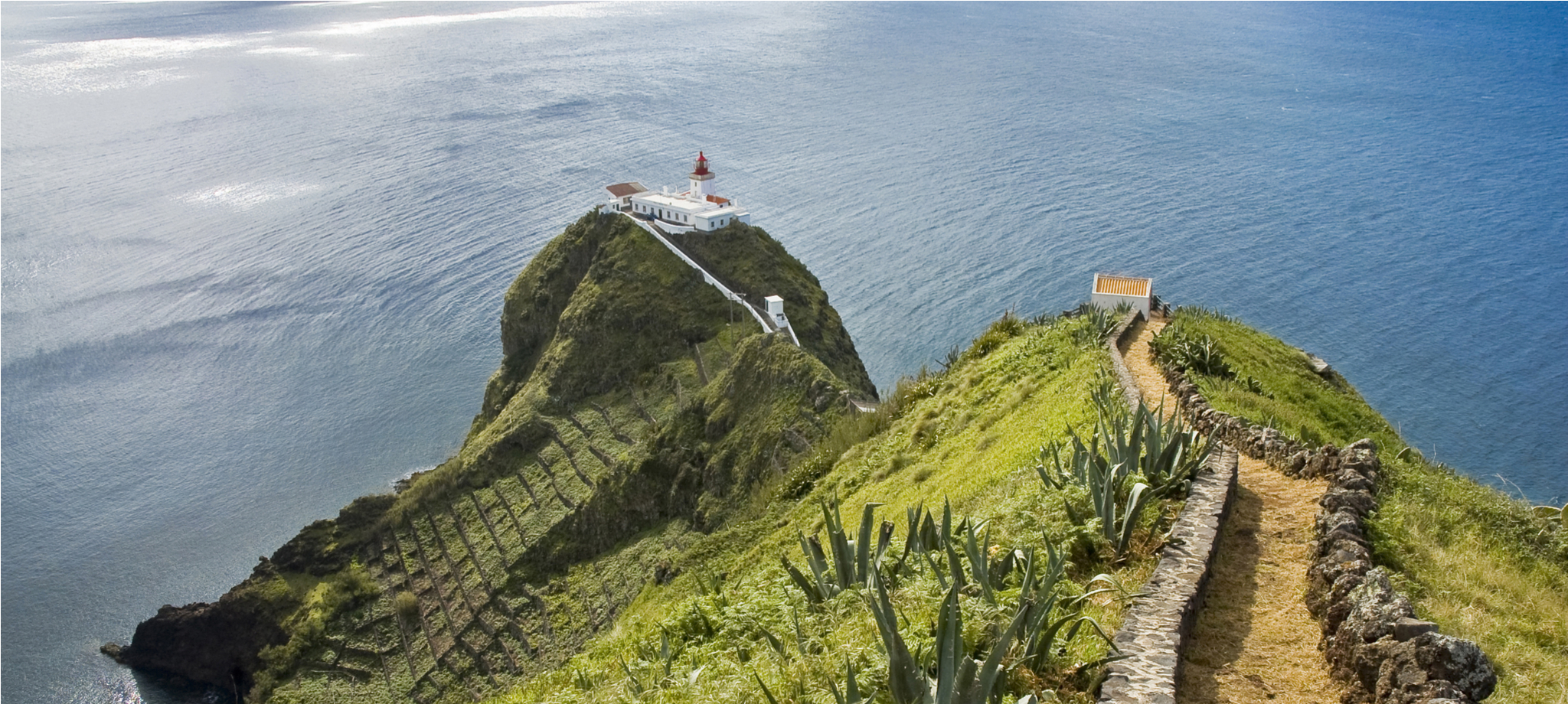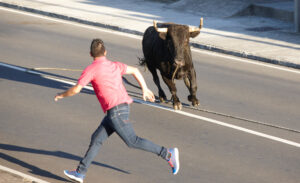Terceira festivals and events: a blend of tradition and celebration
Terceira Island has very important festivities for Azorean Culture. These celebrations capture the island’s heritage and among the most iconic events are the Sanjoaninas or the Bullfights, reflecting the island’s unique traditions.
Sanjoaninas – The Angra do Heroísmo’s Festival
Sanjoaninas or “São Joaninas”, takes place in Angra do Heroísmo around St. John’s Day (June 24th). The festival is tied to the Popular Saints—St. Anthony, St. John, and St. Peter. Over time, it has evolved into a series of bullfighting events, including “bullfights on a rope” in the streets. The celebrations also feature ethnographic parades with traditional costumes and “carros de toldo” (covered carts). The Sanjoaninas lasts several days, filling the city with a festive atmosphere.
Touradas à Corda – Bullfights on a Rope
Bullfights in Terceira, Azores, are very famous and sought after by tourists because it’s a unique tradition that dates to the 16th century. It developed due to the abundance of cattle and influences from Castilian settlers. The bull’s movements are controlled by a rope, held by men, ensuring a lively yet safe spectacle. Bulls are bred for agility and have padded horns to reduce risks. Events feature daring maneuvers like the “parasol lucky,” where participants taunt the bull with a colorful parasol.
A seaside variation occurs near beaches, adding a playful touch. Participants and the bull often splash into the ocean, drawing cheers from onlookers. The season runs daily from May 1st to September 30th, offering frequent opportunities to experience this exciting tradition.
Festivity of the “Vinhas” in Biscoitos (Vineyards Festival)
Held in the parish of Biscoitos (a city on Terceira Island), the Vineyards Festival takes place every August. Biscoitos is known for its wine culture and volcanic vineyards. The event celebrates the island’s winemaking traditions with tastings, tours of local vineyards, and cultural activities. The festival is an opportunity to enjoy Terceira’s unique wines, especially “vinho de cheiro,” while learning about traditional winemaking methods passed down through generations. The landscape of Biscoitos, characterized by its stone-walled vineyards, adds to the festival’s charm.
Carnival Celebrations – Colorful Dances and “Bailinhos”
Carnival on Terceira Island is unique due to its emphasis on theatrical performances known as “bailinhos.” These humorous, satirical plays and dances are performed in various halls across the island during the days leading up to Lent. Hundreds of participants take part, rehearsing for months to prepare their acts. The tradition is distinct from other Azorean islands, making Terceira’s Carnival one of the most colorful and culturally significant events in the region. These performances bring together communities and provide a lively atmosphere with music, dance, and costumes.
Holy Ghost Festivals – A Tradition Across Terceira Islan
The Holy Ghost Festivals, or “Festas do Divino Espírito Santo,” are a centuries-old tradition in Terceira. Linked to Franciscan mysticism and inspired by Queen St. Elizabeth of Portugal, they came with the first settlers. The festivals became central to the culture as people sought divine protection from natural disasters. While devotion faded in mainland Portugal, it flourished in the Azores and spread to Azorean communities abroad, including Brazil, the U.S., Canada, and Hawaii.
The festivals focus on charity, distributing food to those in need. Celebrations begin on Trinity Sunday when “mordomos” (stewards) are chosen to organize next year’s event. The crown, scepter, and silver plate of the Holy Ghost are passed weekly among stewards, leading to a final feast day at the “Império” (chapel). Traditional dishes like “Holy Ghost soups,” “alcatra,” and sweet bread are shared, accompanied by “vinho de cheiro.” The joyful atmosphere includes dances, songs, and a “tourada a corda” in rural areas.
Feast of Nossa Senhora da Conceição – Religious Celebration
The Feast of Nossa Senhora da Conceição, celebrated on December 8th, is an important religious and cultural event on Terceira Island. The festivities include religious processions, masses, and cultural activities. It’s a time when communities come together to honor the island’s patroness. The event is significant in the Azorean religious calendar and is marked by devotion, music, and traditional foods. This feast provides an opportunity to experience the island’s strong sense of faith and community.
In addition to these festivities, there is much more to see and do on Pico Island (and to taste too!).
Experience everything the island has to offer with a local guide through our tour packages!

